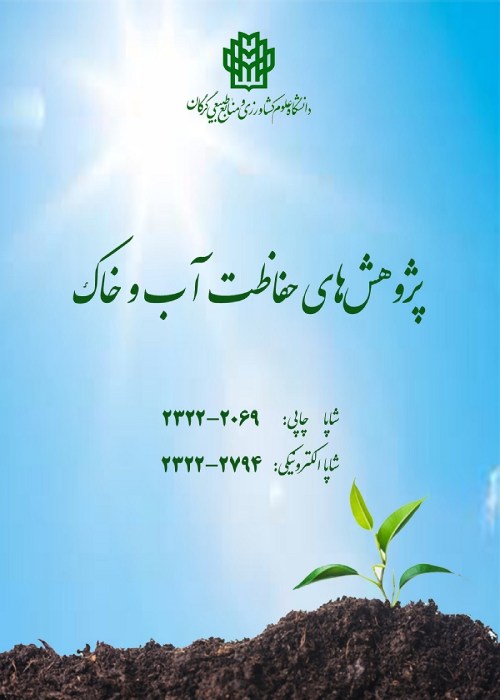Simulating the groundwater table of Sarakhs plain with combination of geostatistical and artificial intelligence methods
Simulation of groundwater is very important in order to groundwater table prediction, hydrogeological and management studies, construction of structures, agricultural use, and access to high quality groundwater. In recent decades, artificial intelligence models have been tested for simulation of aquifers due to the complex and nonlinear properties of groundwater systems. The purpose of this study is comparison the different models of artificial intelligence (artificial neural network, multi-layer perceptron, radial basis function and neuro-fuzzy) and its composition with geostatistics methods to modeling the groundwater table in the Sarakhs plain. Investigation of recent studies shows that simulation of groundwater level with artificial intelligence methods in different regions has different results.
Sarakhs County with more than 5000 Km2 area is located in 60°15' to 60°30' eastern longitude and 35°55' to 36°40' northern latitude. Sarakhs Plainﹸs aquifer is unconfined type and shaped from a layer of alluvial. In this research, groundwater level data of 18 wells, rainfall and potential evaporation in statistical period (1992- 2016) were used. The affected area of each climatology station determined by Thiessenﹸs method and climate data of each station generalized to wells which situated in related polygon. The artificial intelligence models that used in this study were Multi-Layer Perceptron (MLP), Radial Basis Function (RBF) and Neuro Fuzzy (NF) and geostatistics methods were Kocriging, Kriging and Inverse Distance Weighting. 70 percent of the input data for training of models and the remaining 30 percent were used for testing of them. To assessment of the results of simulations with Artificial Intelligence models the criteria of correlation coefficient (R), Mean Absolute Error (MAE) and Coefficient of Determination (R2) and for evaluation of geostatistics method the criteria of Root Mean Square Error (RMSE) and Mean Square Error (MSE) were used.
The results showed that the multi-layer perceptron model is more accurate than other models, according to R=0.77, R2 = 0.62 and MAE = 0.80. To determination of the best geostatistical model, for spatial prediction of the groundwater level, the results of multi-layer perceptron model used as input data. The results showed that Kriging method with RMSS= 1 and RMS= 0.066, is better model to spatial simulation of groundwater level in Sarakhs plain and base of Kriging method, the maps of groundwater level in each year was designed. Assessment of these maps showed the most decline of groundwater level is in the north parts of Skaraks plain and south part of this Palin has a little declining of groundwater level.
The combination of the MLP model and the Kriging interpolation method is a suitable and low cost solution for simulating of the groundwater level in the Sarakhs Plain. It is suggested that if possible more dependent variables be used to increase the accuracy of artificial intelligence models. Also, for better prediction of groundwater level, the other artificial intelligence models with different algorithms should be used.
- حق عضویت دریافتی صرف حمایت از نشریات عضو و نگهداری، تکمیل و توسعه مگیران میشود.
- پرداخت حق اشتراک و دانلود مقالات اجازه بازنشر آن در سایر رسانههای چاپی و دیجیتال را به کاربر نمیدهد.


